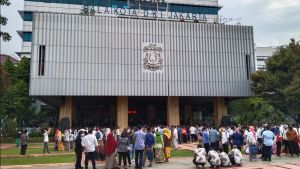JAKARTA - Uterine fibroids are very common growths in a woman's uterus. If you are a woman over 20 years of age, one day you will experience fibroids.
Uterine fibroids are tumors, but they are most often benign tumors and are not cancerous growths. Most do not cause symptoms, although it can be a problem for some women.
Launching CNN, here are 7 things to know about uterine fibroids.
1. Size and location varyThe uterus is a muscle organ, and fibroids are muscle tumors. Fibroids can grow in the uterus, inside the muscle wall of the uterus, or outside the uterus. Sometimes, they grow from a thin stalk that sticks to the uterus. You can have one or many fibroids. Fibroids can be as small as a marble or the size of a grapefruit.
2. Risks varyFibroids can occur at any age. They usually develop in women aged 30 to 40 years. It's estimated that by age 50, up to 80% of women have had fibroids. After menopause, fibroids tend to shrink.

You may be at a higher risk of developing fibroids if you are African-American, overweight, or eat more meat than vegetables. Fibroids also run in families, meaning you have a much greater risk of fibroids if your mother has fibroids.
3. Symptoms are differentMost women with fibroids have no symptoms. Symptoms that appear can include heavy bleeding during menstruation, bleeding between menstruation, or painful menstruation. Other symptoms that may include pain during sex, constipation, and difficulty urinating. Large fibroids can cause stomach cramps. Fibroids can also make you look pregnant.
4. Various ways of diagnosisYour doctor may be able to feel fibroids during a pelvic exam. If you have large fibroids or fibroid symptoms, your doctor may order tests to learn more. Hysteroscopy is one such procedure. This allows your doctor to see inside your uterus through your vagina. Fibroids also appear on imaging studies such as ultrasound, X-rays, MRI, and CT scans.
5. Pregnancy problemsMany pregnant women, despite having fibroids, are able to have a normal delivery. However, if you have fibroids, your doctor will pay extra attention to ensure the health and safety of you and your fetus.

Because fibroids can make you need a caesarean section, breech delivery, or premature delivery. Fibroids can also make it difficult for you to get pregnant. Not being able to get pregnant is one reason for treating fibroids.
6. First-line treatmentIf you don't have symptoms, you may not need any treatment. If you have bothersome symptoms, treatment may be your first choice. Birth control pills can control painful and heavy periods.
Hormone drugs, called gonadotropin-releasing hormone (GnRHa) agonists, can stop menstruation and shrink fibroids. You do this with a nasal injection or spray. An intrauterine device (IUD) is another treatment option.
7. Operation cureSome women have bothersome or severe symptoms of fibroids that don't get better with treatment. Removal of the uterus (hysterectomy) is the only operation that can completely cure fibroids.
Other procedures target existing fibroids. They don't prevent new ones from developing. These procedures include undergoing surgery to remove the fibroids, freeze them, destroy them with an electric current, and cut off the blood supply. Women who still wish to have children can choose one of these procedures instead of a hysterectomy.
The English, Chinese, Japanese, Arabic, and French versions are automatically generated by the AI. So there may still be inaccuracies in translating, please always see Indonesian as our main language. (system supported by DigitalSiber.id)













